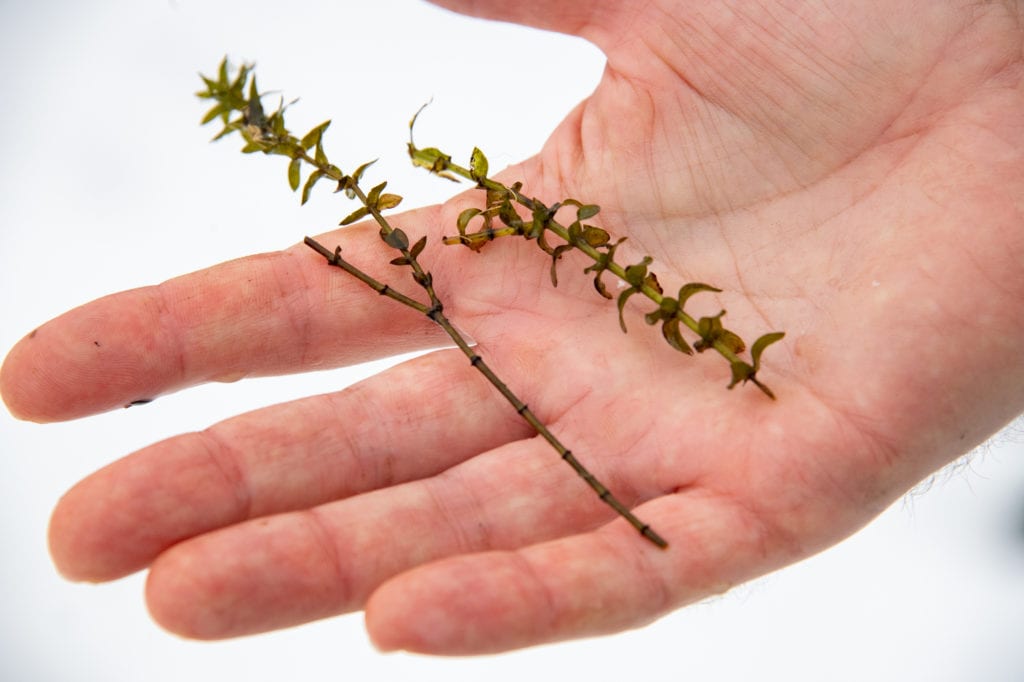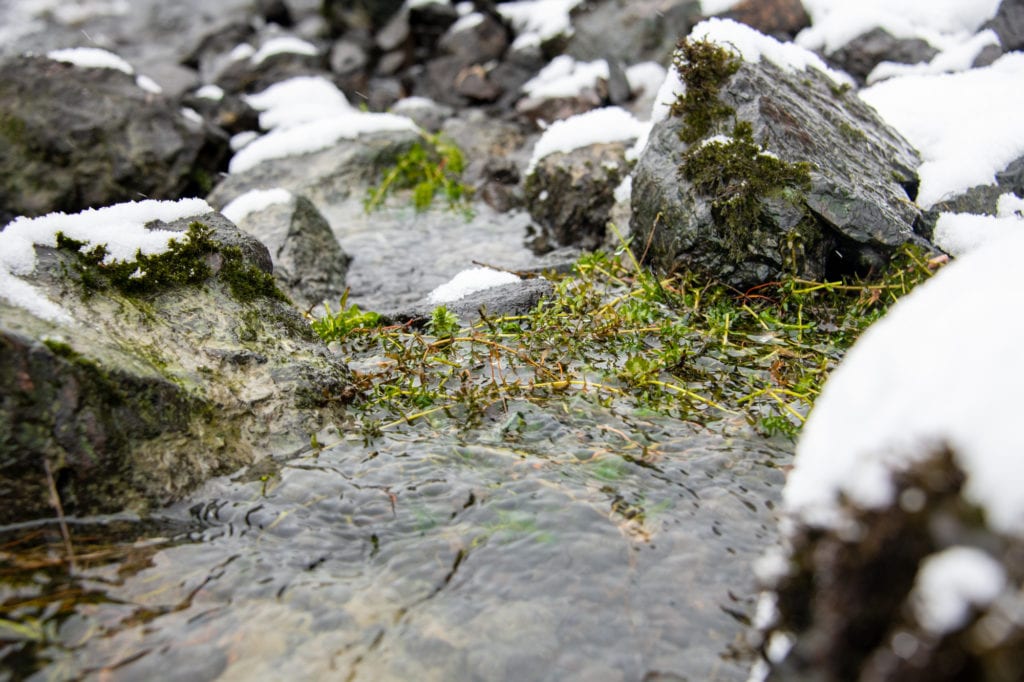
Elodea is, in its way, a true Cordova success story. This water weed was first spotted in Alaska in 1982 in Eyak Lake. Since then, it has spread across the Kenai Peninsula and colonized lakes near Anchorage and Fairbanks. Easy to spread and difficult to kill, a small piece of elodea stuck to a boat or to a bird’s foot can regenerate in a new location, growing until it crowds out native plants.
The original elodea infestation in Eyak Lake probably came from a fish aquarium, according to a Department of Agriculture report. Initially, scientists didn’t act to limit its growth, believing that it was a native species.
Forest Service scientists are now concerned that the spread of elodea through the Copper River Delta might impact salmon. Like reed canary grass, elodea grows thickly and can increase sedimentation on the stony riverbeds preferred by spawning salmon. In areas like South Central Alaska’s Alexander Lake, where salmon and pike coexist, elodea has had an additional effect. The weed gives predatory pike an effective hiding place, greatly increasing salmon mortality, according to the report.
In 2016, the Forest Service began testing elodea eradication methods in three ponds and a slough off Eyak River. This produced mixed results, said Kate Mohatt, Prince William Sound Zone ecologist for the Forest Service. The Forest Service’s weapon of choice was fluridone, an herbicide shown by Environmental Protection Agency research not to cause tumors, reproductive sterility or other disorders associated with some herbicides. Fluridone, which can only kill a plant with prolonged application, was chosen over diquat, an herbicide that kills on contact, Mohatt said. To achieve prolonged, consistent application of fluridone, time-release pellets were used. In summer 2019, the Forest Service also began elodea eradication trials at Wrong Way Pond, near McKinley Lake.
The Forest Service applied SonarOne, a brand of fluridone pellets, at a concentration of roughly between five and 15 parts per billion, Mohatt said. EPA guidelines state that water containing up to 150 parts per billion of fluridone remains safe to drink, according to a USDA report. Manual means of getting rid of elodea, such as digging it up, were rejected as either impractical or likely to encourage the plant to spread by dispersing small bits of it around the area.

Getting rid of an invasive plant like elodea may seem like a no-brainer. But elodea is so thoroughly entrenched around Cordova that even a well-planned and well-funded eradication effort could fail, Mohatt said. While elodea has successfully been eradicated from several lakes around Anchorage and on the Kenai Peninsula, these were much smaller areas of infestation with less rainfall than around Cordova.
“It’s not clear if we would be able to eradicate it at this point, because it’s spread throughout the system,” Mohatt said. “It’s become so widespread that my biggest concern is, if we were to just jump in and start treating it, it would cost millions of dollars which we don’t have, and it could fail. We don’t have a full understanding of how we could feasibly treat this thing in such a dynamic, wet environment.”
It’s also unclear just how much of an impact elodea actually has around Cordova. While elodea has dramatically harmed salmon in areas that also host pike, pike haven’t yet been introduced to the Copper River Delta. The Forest Service is currently working with out-of-state researchers to study the impacts of elodea of salmon, both directly and indirectly via the food web, Mohatt said. It remains possible that elodea may not pose a threat severe enough to justify applying a costly and complex cure.
“We know that, in some other systems, it’s very problematic for the native species and has huge impacts on fish,” Mohatt said. “But it’s not clear that it’s having these drastic impacts on the delta… We’re still teasing apart what the implications are for the delta.”
Researchers are also looking for ways to contain the spread of elodea in areas where it can’t be fully eradicated. Data collection around the delta will likely continue until at least 2022, Mohatt said.





